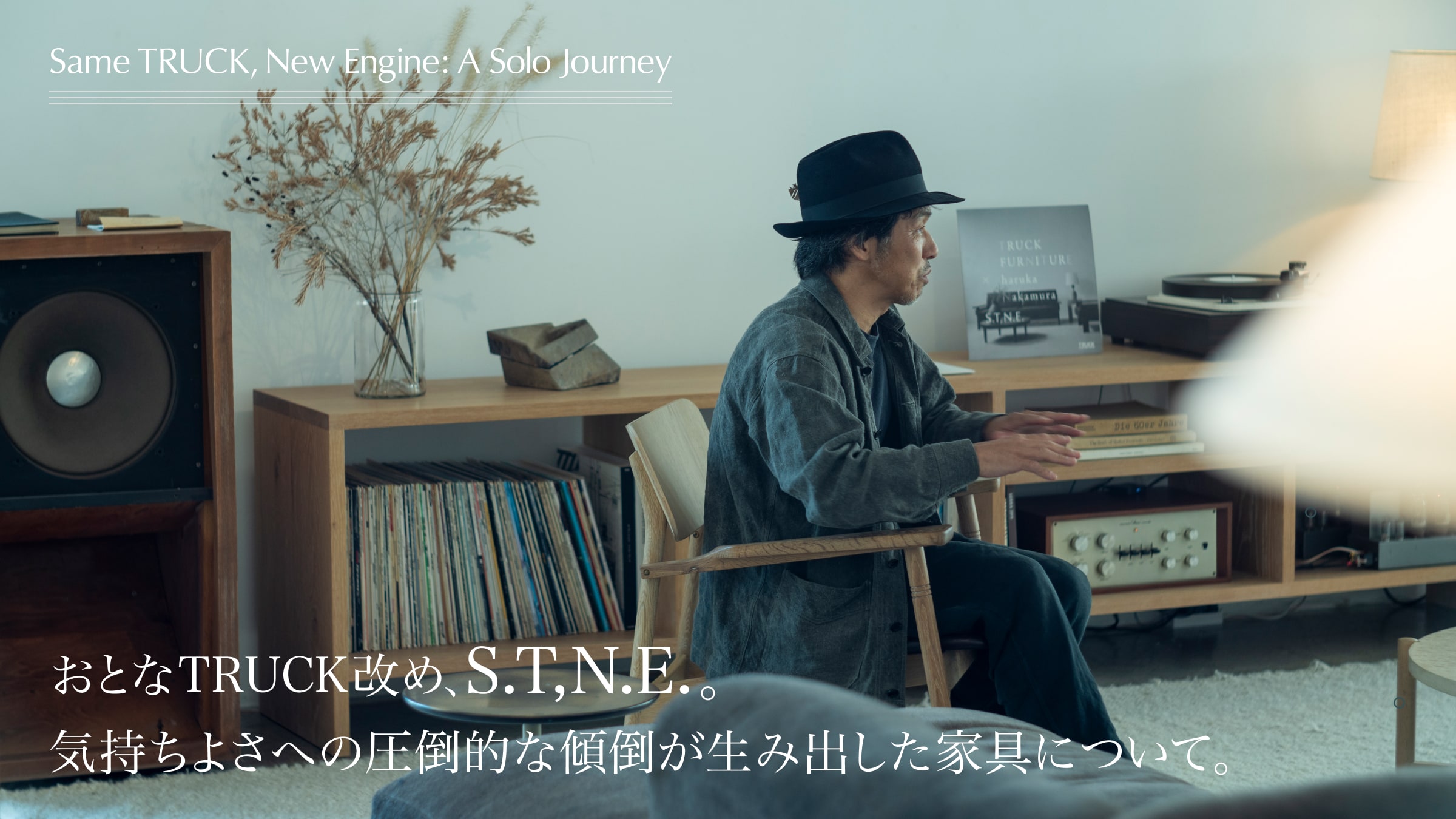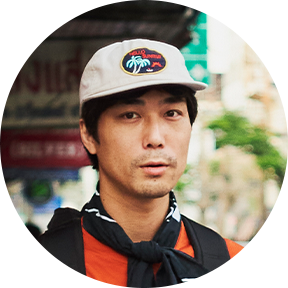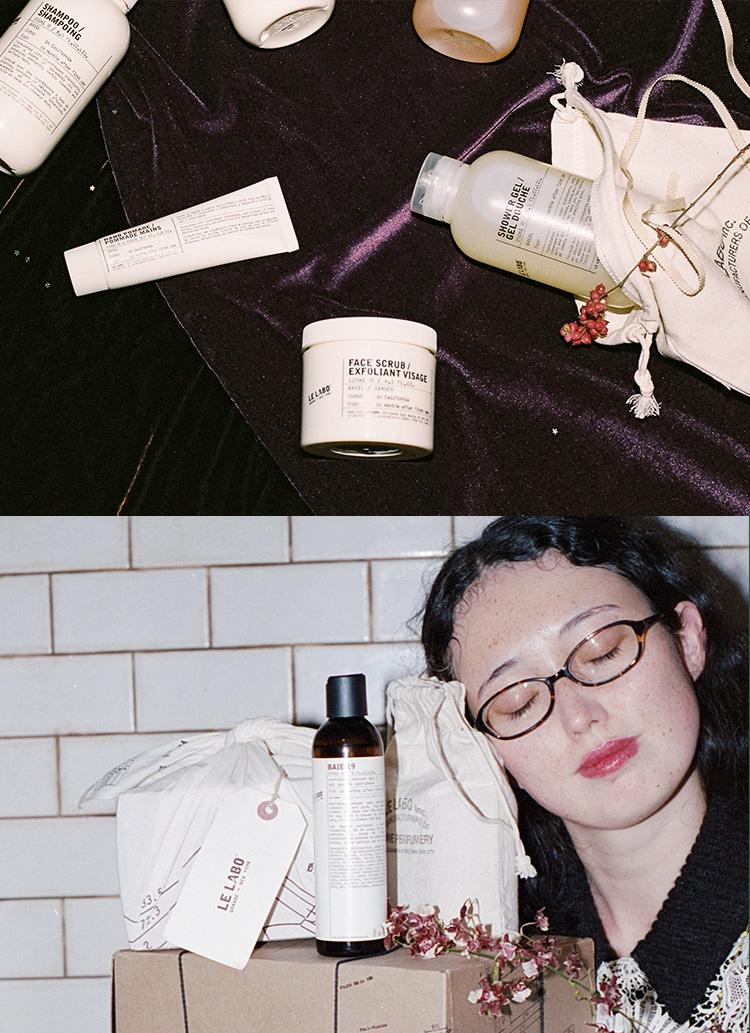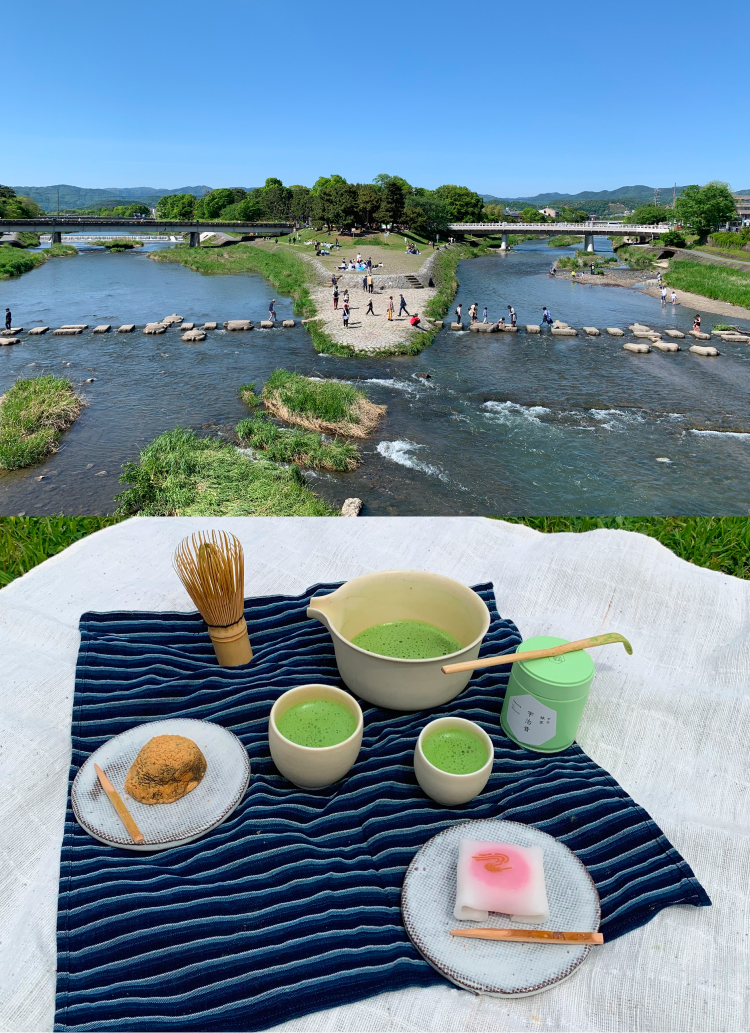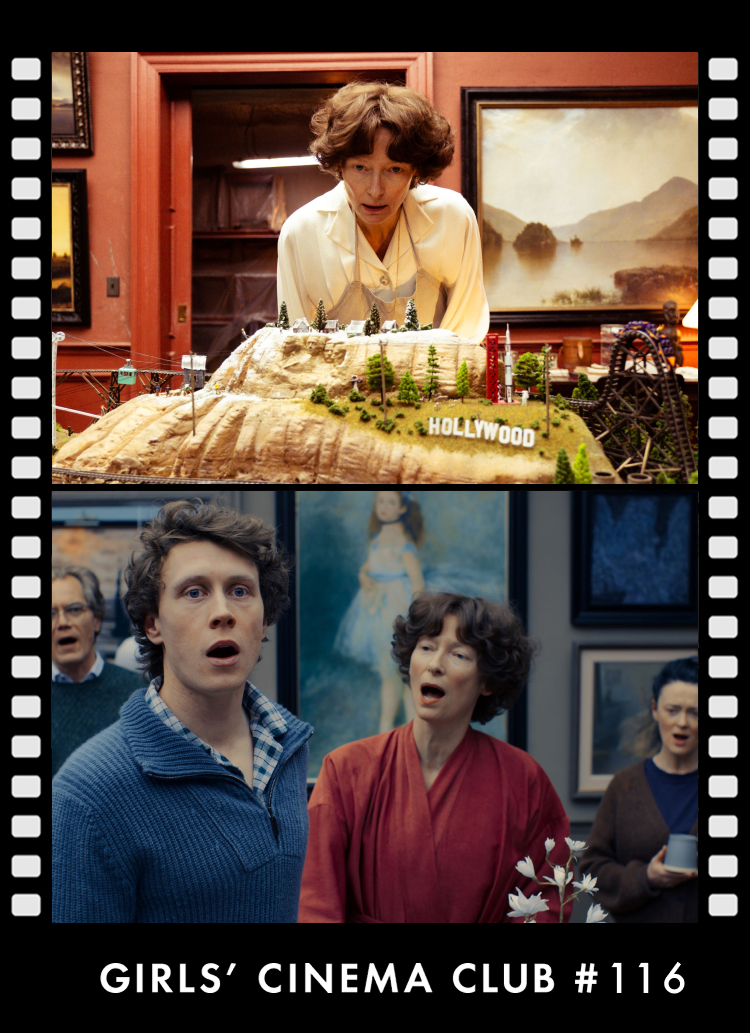PROFILE
Born in Osaka in 1968. After graduating from high school, he studied furniture making at the woodworking department of Matsumoto Technical College in Nagano Prefecture. In 1997, he established "TRUCK" with Hiromi Karatsu, and in 2009, they moved to their current location in Asahi-ku, Osaka. In 2009, he moved to his current location in Asahi-ku, Osaka, where he continues to produce one-of-a-kind furniture with a thorough attention to detail and quality.
We dare not create highlights.
S.T.N.E." started in December 2024.
Kise: TRUCK It has been 28 years since you started TRUCK (TRUCK). Actually, around 10 years ago, I felt a desire to return to the simplicity of the early days, when we just didn't think too much about things. But the new furniture I was making at that time was very creative in its details, adding and adding. Of course, that was interesting, but in a strange way, I also wanted to return to a simpler form, one that had been stripped down. But that didn't take shape for a while.

The interview took place at the exhibition hall where the exhibition was unveiled in Tokyo. Mr. Kise played a jazz piano record in the space where a living room had been recreated by bringing in furniture and other items from his home.
Kise: Last year, I spent about three years building a new house. What I was looking for in the house was a sense of openness, a clear, almost empty white space. I rented a loft in downtown Los Angeles for about five years, and the ceilings were about five meters high, so it was very comfortable. I wanted to have a space like that in my daily life, and I was making new furniture while also thinking about my house.
I didn't really know what it was, but I called it "Adult TRUCK," and we started creating things little by little. I didn't know what it was, and the staff didn't know what I was talking about. I wondered what they were talking about. But as we worked on it, it somehow began to take shape. Basically, what I wanted to do was to do nothing. To take it to an extreme, if I asked you to draw the tables and shelves of "S.T.N.E.," you could do it. It's so simple. But, you know, it was quite difficult...
What difficulties did you encounter?
Kise: I have been designing to "create highlights" for a long time. I was happy to create such "highlights" myself. But this time, I wanted to eliminate that "highlight" feeling. However, I am a furniture maker, so I have to put a price on my products and put them out into the world. However, I felt a sense of tension because it was not for my own use.

PLACE" is available in two sizes: L (¥363,000) on the left and S (¥253,000) on the right. SHELF". Among the books on display is a book (¥6,050), which was photographed and written by Kise for this exhibition.
Kise: For example, I wondered if this shelf could be a product. But when I placed it in the showroom and took pictures, I thought it looked good. That was the first step that was OK with me. From there, it was important to see how customers and other people would feel when they saw it. Thankfully, some people told me they came to see the showroom, and the editor-in-chief of an interior design magazine told me he was most interested in the shelves. It made me happy to know that something was getting through to them. I was also very happy to hear a longtime TRUCK fan say, "I feel the strength that is typical of TRUCK.
Has the root of the production process remained the same?
Kise: I have never made products based on trends. I have always made what I wanted. This time, I made the furniture in parallel with the construction of the house, and the concept is the same as with "TRUCK". However, when you first launched "S.T.N.E.," you were making too much of a difference from "TRUCK. Perhaps the website was too black-and-white and cool, and some customers said, "I've been betrayed. But when people actually saw them in the store, they said they were "gentle" and "soothing. I reflected on the fact that the way I showed them was wrong.
What is the origin of the name "S.T.N.E."?
Kise: I called it "Adult TRUCK" until about halfway through the project, but that was just another name. I talked to Brad, a designer I met in L.A. who was involved in concept creation, but I couldn't find a name that fit. I told my friend Steven Ken about it, and he later sent me a message. He said that it was like when you restore an old car, you keep the exterior and only change the engine, and that the new engine was his passion for the new design. I thought, "That's a good idea," but I thought, "Same TRUCK, New Engine" was too long, so I left it alone. But then it occurred to me, and I decided to take the initials and change it to "S.T.N.E.".


As I mentioned earlier, I get the impression that there is no discrepancy between what you like and your lifestyle and the furniture you make from it.
Kise: I don't have a single one of these. It's not like I suddenly fell in love with this one, but I've always had things that I like. For example, I still have the mountain bike I bought in the first year of junior high school and the helmet I painted in high school. Of course, I like new things, but the basics are always the same.
Until now, "TRUCK" had a strong workwear image. We made furniture in a factory every day, and our favorite shoes were work boots with steel caps. Denim pants and coveralls. That was the base of my style. But as I came into contact with various things, I gradually wanted to pick up something different. Some people say they only like jazz music, which is cool, but I want to listen to a variety of music and try new things, and when I get used to them, I want to adopt them. I guess you could say I am broadening my horizons. It's the same with furniture.
Of course, some people said that it was unexpected to have a white space (white cube) in both your new home and this exhibition space.
Kise: All the plants and various things here are things that people have picked up from around the area. I often think, for example, if a rusty, bent nail were to fall on the side of the road, no one would care. But if they were placed in a white gallery, I think it would be really cool. If the placement changes, the way it looks will also change. That's why I also like empty, plain vessels.

He not only puts things he finds on his body, but also puts them on his body. The pigeon feather he found on the side of the road is attached to his hat. He chooses objects based on his own criteria, valuing encounters, memories, and senses rather than labels.


